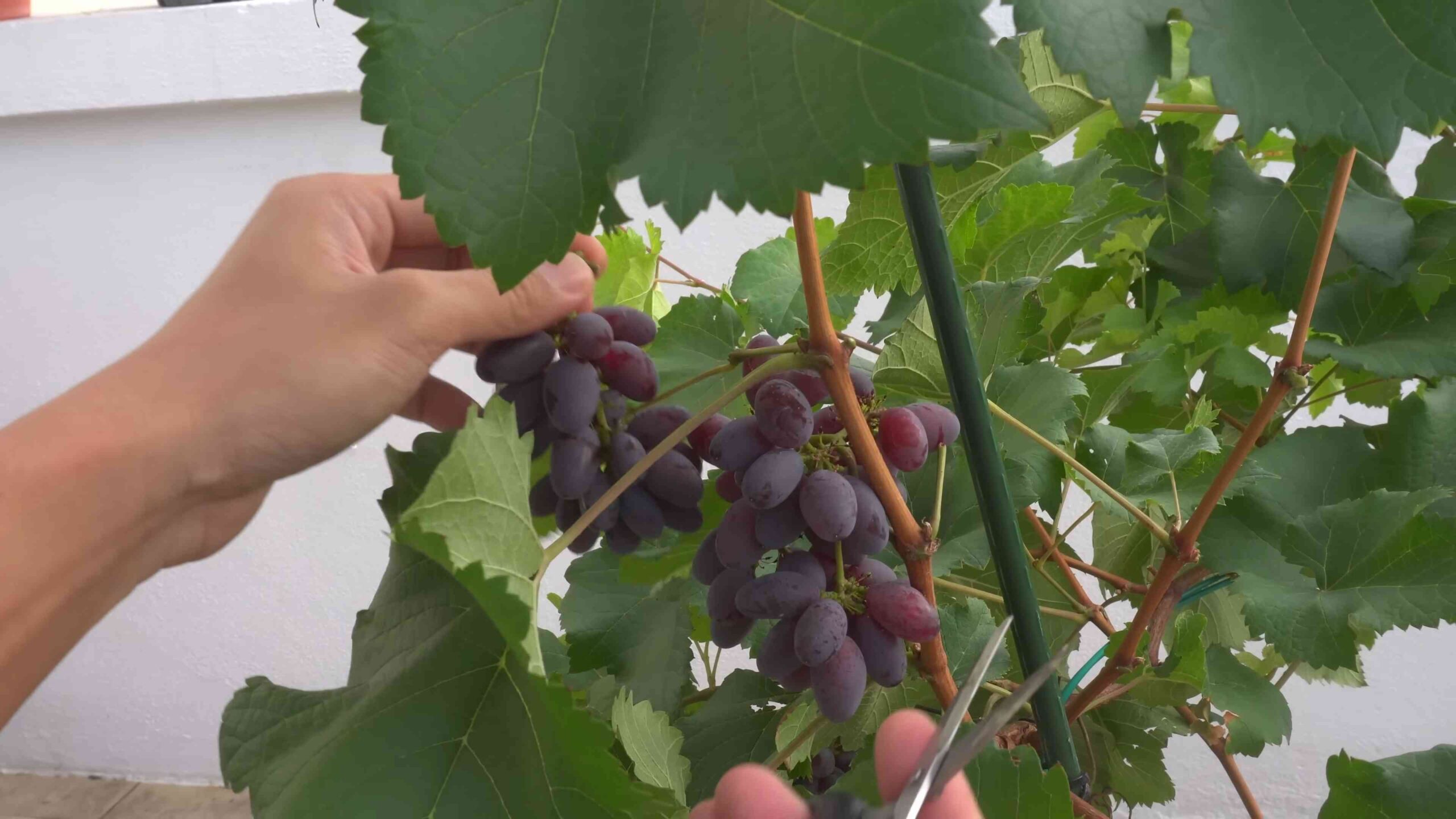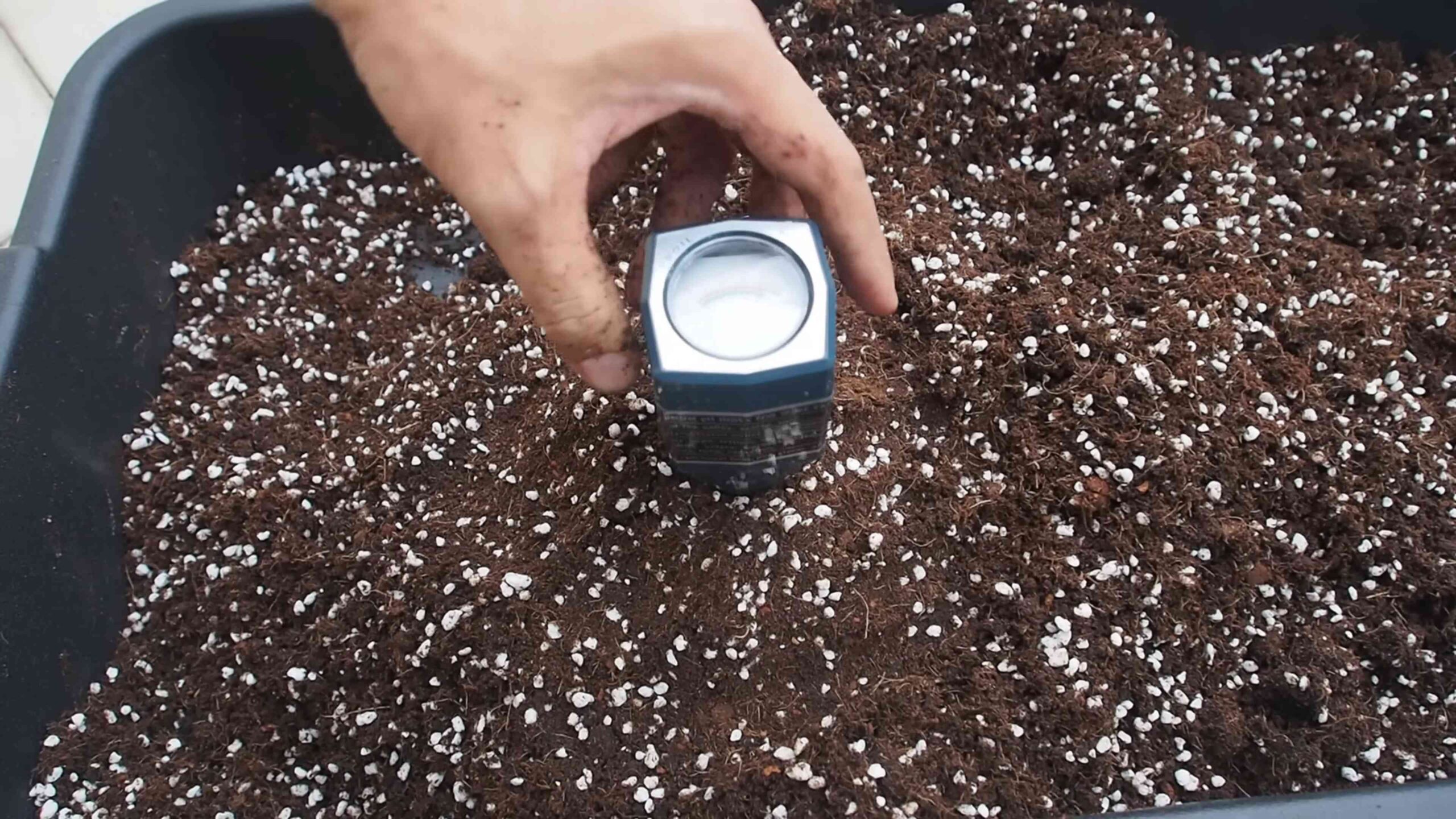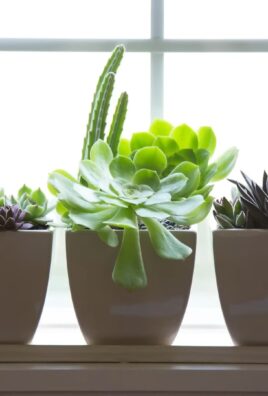Growing grapes in pots might sound like a challenge reserved for seasoned vineyard owners, but trust me, it’s totally achievable, even if you’re just starting your home gardening journey! Have you ever dreamed of plucking juicy, sun-ripened grapes straight from your own balcony or patio? Well, this DIY guide is your ticket to making that dream a reality.
Grapes have a rich history, dating back thousands of years. From ancient civilizations using them for wine production to their symbolic significance in various cultures, grapes have always held a special place. While traditionally grown in sprawling vineyards, modern gardening techniques have made it possible to cultivate these delicious fruits in smaller spaces.
Why should you try growing grapes in pots? Well, for starters, it’s incredibly rewarding! Imagine the satisfaction of harvesting your own grapes, knowing you nurtured them from tiny vines to fruitful plants. Plus, it’s a fantastic way to add a touch of elegance and greenery to your outdoor space, even if you only have a small balcony. More importantly, growing grapes in pots allows you to control the soil conditions and protect your precious vines from harsh weather, ensuring a bountiful harvest year after year. So, let’s dive in and discover the secrets to successful container grape growing!

Growing Grapes in Pots: A Bountiful Harvest on Your Patio!
Hey there, fellow gardening enthusiasts! Ever dreamed of plucking juicy grapes right from your own backyard? Well, guess what? You don’t need acres of land to make that dream a reality. Growing grapes in pots is totally doable, and I’m here to guide you through every step of the process. It’s easier than you think, and the reward of homegrown grapes is absolutely worth it. Let’s get started!
Choosing the Right Grape Variety
First things first, not all grape varieties are created equal when it comes to container gardening. You’ll want to pick a variety that’s well-suited for smaller spaces and produces a manageable amount of fruit. Here’s what to keep in mind:
* Consider Size: Opt for compact or dwarf grape varieties. These are naturally smaller and won’t outgrow their pots as quickly.
* Disease Resistance: Look for varieties that are resistant to common grape diseases like powdery mildew and black rot. This will save you a lot of headaches down the road.
* Climate Compatibility: Choose a variety that thrives in your local climate. This is crucial for successful grape growing.
* Popular Choices: Some great options for container growing include ‘Himrod’ (seedless white), ‘Reliance’ (seedless red), ‘Vanessa’ (seedless red), ‘Jupiter’ (seedless blue), and ‘Thompson Seedless’ (seedless green). These are generally vigorous but manageable in pots.
Gathering Your Supplies
Okay, now that you’ve picked your grape variety, let’s gather the necessary supplies. Here’s what you’ll need:
* A Large Pot: This is super important! Choose a pot that’s at least 24 inches in diameter and 24 inches deep. Grapes have extensive root systems, so they need plenty of room to grow. Make sure the pot has drainage holes!
* Well-Draining Potting Mix: Don’t use garden soil! It’s too heavy and compacts easily. Instead, opt for a high-quality potting mix that’s specifically formulated for containers. A mix of peat moss, perlite, and vermiculite works well.
* Grape Vine: You can purchase grape vines from a local nursery or online. Look for healthy, one-year-old vines.
* Trellis or Support Structure: Grapes are vines, so they need something to climb on. A trellis, arbor, or even a sturdy stake will work.
* Pruning Shears: You’ll need these to prune your grape vine regularly.
* Fertilizer: Use a balanced fertilizer specifically formulated for fruit trees or vines.
* Watering Can or Hose: For watering your grape vine.
* Gloves: To protect your hands.
Planting Your Grape Vine
Alright, let’s get our hands dirty! Here’s how to plant your grape vine in its new home:
1. Prepare the Pot: Fill the pot with your well-draining potting mix, leaving a few inches of space at the top.
2. Dig a Hole: Dig a hole in the center of the pot that’s large enough to accommodate the grape vine’s root ball.
3. Remove the Grape Vine from its Container: Gently remove the grape vine from its nursery container. If the roots are pot-bound (tightly circling the root ball), gently loosen them with your fingers.
4. Plant the Grape Vine: Place the grape vine in the hole, making sure the top of the root ball is level with the soil surface.
5. Backfill with Soil: Fill in the hole with potting mix, gently firming the soil around the base of the vine.
6. Water Thoroughly: Water the grape vine thoroughly until water drains out of the drainage holes.
7. Install the Trellis: Position the trellis or support structure near the grape vine. Gently guide the vine’s tendrils towards the trellis so it can start climbing.
Caring for Your Potted Grape Vine
Now that your grape vine is planted, it’s time to provide it with the care it needs to thrive. Here’s what you need to do:
* Watering: Water your grape vine regularly, especially during hot, dry weather. The soil should be consistently moist, but not soggy. Check the soil moisture by sticking your finger into the soil. If the top inch feels dry, it’s time to water.
* Fertilizing: Fertilize your grape vine in the spring and early summer with a balanced fertilizer. Follow the instructions on the fertilizer package.
* Sunlight: Grapes need at least 6-8 hours of sunlight per day to produce fruit. Place your potted grape vine in a sunny location.
* Pruning: Pruning is essential for grape production. Prune your grape vine in late winter or early spring, before new growth begins. Remove any dead, damaged, or crossing branches. Also, prune back the previous year’s growth to encourage fruit production.
* Pest and Disease Control: Monitor your grape vine regularly for pests and diseases. If you notice any problems, take action promptly. You can use organic pesticides or fungicides to control pests and diseases.
* Winter Protection: In colder climates, you’ll need to protect your potted grape vine from freezing temperatures. You can move the pot to a sheltered location, such as a garage or shed. You can also wrap the pot with burlap or blankets to insulate the roots.
Pruning Your Grape Vine: A Step-by-Step Guide
Pruning can seem intimidating, but it’s actually quite simple once you get the hang of it. Here’s a step-by-step guide to pruning your potted grape vine:
1. Remove Dead, Damaged, or Diseased Wood: Start by removing any dead, damaged, or diseased branches. These branches won’t produce fruit and can harbor pests and diseases.
2. Identify the Main Trunk: The main trunk is the central stem of the grape vine. It should be strong and healthy.
3. Select the Cordons: Cordons are the horizontal arms that extend from the main trunk. Choose two or three healthy cordons that are evenly spaced along the trunk.
4. Prune the Cordons: Prune the cordons back to about 6-8 buds each. These buds will produce the fruiting shoots.
5. Remove Suckers: Suckers are shoots that grow from the base of the vine. Remove them as they appear.
6. Remove Water Sprouts: Water sprouts are vigorous, upright shoots that grow from the cordons. Remove them as they appear.
Harvesting Your Grapes
After all your hard work, it’s finally time to harvest your grapes! Here’s how to tell when your grapes are ripe:
* Check the Color: The grapes should be fully colored and have a uniform appearance.
* Taste a Few Grapes: The grapes should be sweet and juicy.
* Check the Seeds: The seeds should be brown and easily separated from the pulp.
Once your grapes are ripe, you can harvest them by snipping the clusters from the vine with pruning shears. Enjoy your homegrown grapes fresh, or use them to make juice, jam, or wine!
Troubleshooting Common Problems
Even with the best care, you may encounter some problems when growing grapes in pots. Here are some common problems and how to fix them:
* Yellowing Leaves: Yellowing leaves can be caused by a nutrient deficiency, overwatering, or underwatering. Check the soil moisture and fertilize your grape vine if necessary.
* Powdery Mildew: Powdery mildew is a fungal disease that causes a white, powdery coating on the leaves and fruit. Treat powdery mildew with a fungicide.
* Black Rot: Black rot is another fungal disease that causes dark, sunken spots on the leaves and fruit. Treat black rot with a fungicide.
* Japanese Beetles: Japanese beetles are common pests that can damage grape leaves and fruit. Handpick the beetles off the vine or use an insecticide.
* Lack of Fruit: A lack of fruit can be caused by improper pruning, insufficient sunlight, or a nutrient deficiency. Make sure you’re pruning your grape vine correctly, providing it with enough sunlight, and fertilizing it regularly.
Enjoying Your Homegrown Grapes
Growing grapes in pots is a rewarding experience that allows you to enjoy fresh, homegrown grapes even if you don’t have a lot of space. With a little care and attention, you can have a bountiful harvest of delicious grapes right on your patio or balcony. So, what are you waiting for? Get started today and enjoy the fruits (literally!) of your labor! I hope this guide has been helpful, and happy gardening!

Conclusion
So, there you have it! Mastering the art of growing grapes in pots is not only achievable, but it’s also incredibly rewarding. We’ve walked through the essential steps, from selecting the right variety and pot size to providing the necessary support and care. But why should you even bother with this DIY endeavor?
Simply put, growing grapes in pots opens up a world of possibilities, especially for those with limited space or less-than-ideal soil conditions. Imagine harvesting your own plump, juicy grapes right from your balcony, patio, or even a sunny windowsill. It’s a tangible connection to nature, a source of fresh, homegrown produce, and a conversation starter all rolled into one.
Beyond the practical benefits, there’s a certain satisfaction that comes from nurturing a plant from its humble beginnings to a bountiful harvest. You’ll witness the magic of nature unfold before your eyes, learning about the plant’s life cycle and developing a deeper appreciation for the food we often take for granted.
But the best part is, you can tailor this experience to your own preferences. Experiment with different grape varieties to find your favorite flavor profile. Try training your vines into unique shapes and patterns for an added touch of visual appeal. Consider companion planting with herbs or flowers to attract pollinators and deter pests.
For example, if you prefer sweeter grapes, try varieties like ‘Thompson Seedless’ or ‘Canadice’. If you’re looking for a more robust flavor, ‘Concord’ or ‘Niagara’ might be a better choice. You can also experiment with different soil mixes to see which one works best for your specific climate and growing conditions.
Don’t be afraid to get creative and personalize your grape-growing journey. The possibilities are endless!
And remember, growing grapes in pots isn’t just about the end result; it’s about the process. It’s about the joy of tending to your plants, the satisfaction of seeing them thrive, and the pride of sharing your homegrown grapes with friends and family.
So, what are you waiting for? Grab a pot, select your favorite grape variety, and embark on this exciting adventure. We’re confident that you’ll be amazed by what you can achieve.
We encourage you to try this DIY trick and share your experience with us. Let us know what varieties you chose, what challenges you faced, and what successes you celebrated. Your feedback will not only help us improve this guide but also inspire others to give it a try.
Share your photos, tips, and stories in the comments section below. We can’t wait to hear from you! Let’s create a community of grape-growing enthusiasts and learn from each other’s experiences. Together, we can make the world a little bit greener, one potted grape vine at a time.
Frequently Asked Questions (FAQ)
What is the best time of year to plant grape vines in pots?
The ideal time to plant grape vines in pots is during the dormant season, which is typically late winter or early spring before new growth begins. This allows the plant to establish its roots before the active growing season starts. In warmer climates, you might also be able to plant in the fall. Avoid planting during the heat of summer or when the ground is frozen.
What size pot do I need for growing grapes?
Start with a pot that is at least 15-20 gallons in size. As the vine grows, you may need to transplant it into a larger container, eventually reaching 25-30 gallons or more for mature vines. The pot should also have adequate drainage holes to prevent waterlogging.
What type of soil is best for growing grapes in pots?
Grapes prefer well-draining soil that is rich in organic matter. A good potting mix for grapes would be a combination of garden soil, compost, and perlite or vermiculite. Avoid using heavy clay soils, as they can retain too much moisture and lead to root rot. You can also purchase specialized grape-growing mixes from nurseries or garden centers.
How often should I water my potted grape vines?
Water your grape vines regularly, especially during the growing season. The frequency of watering will depend on the weather conditions, the size of the pot, and the type of soil. Generally, you should water when the top inch of soil feels dry to the touch. Avoid overwatering, as this can lead to root rot. During the dormant season, reduce watering frequency.
How much sunlight do grape vines need?
Grape vines need at least 6-8 hours of direct sunlight per day to thrive. Choose a location that receives plenty of sunlight throughout the day. If you live in a hot climate, you may need to provide some afternoon shade to prevent the leaves from scorching.
Do I need to prune my potted grape vines?
Yes, pruning is essential for maintaining the health and productivity of your grape vines. Prune your vines during the dormant season to remove dead, damaged, or diseased wood. You should also prune to shape the vine and encourage fruit production. There are different pruning methods depending on the grape variety and training system. Research the specific pruning requirements for your chosen variety.
How do I fertilize my potted grape vines?
Fertilize your grape vines in the spring with a balanced fertilizer that is specifically formulated for grapes. Follow the instructions on the fertilizer package for application rates. You can also supplement with organic fertilizers such as compost or manure. Avoid over-fertilizing, as this can lead to excessive vegetative growth at the expense of fruit production.
How do I protect my grape vines from pests and diseases?
Monitor your grape vines regularly for signs of pests and diseases. Common pests include aphids, spider mites, and Japanese beetles. Common diseases include powdery mildew, downy mildew, and black rot. Treat any infestations or infections promptly with appropriate insecticides or fungicides. You can also use preventative measures such as spraying with neem oil or copper fungicide.
Can I grow different varieties of grapes in the same pot?
It is generally not recommended to grow different varieties of grapes in the same pot, as they may compete for resources and have different growing requirements. It is best to plant each variety in its own separate pot.
How long does it take for grape vines to produce fruit?
Grape vines typically take 2-3 years to produce fruit after planting. The first year, the vine will focus on establishing its root system. The second year, it will start to produce some vegetative growth. The third year, you may see some fruit production, but it may not be a full harvest. Full fruit production typically occurs in the fourth year and beyond.
What kind of support do grape vines need?
Grape vines are climbing plants and need support to grow properly. You can use a trellis, arbor, or fence to support your vines. The support should be strong enough to hold the weight of the vine and the fruit. Train the vines to grow along the support structure as they grow.
Can I move my potted grape vines indoors during the winter?
In colder climates, it is recommended to move your potted grape vines indoors during the winter to protect them from freezing temperatures. Place the vines in a cool, dark location such as a garage or basement. Water sparingly during the winter months. In the spring, gradually acclimate the vines to outdoor conditions before moving them back outside permanently.
How do I know when my grapes are ripe?
The best way to know when your grapes are ripe is to taste them. Ripe grapes will be sweet and juicy. You can also look for visual cues such as a change in color and a softening of the fruit. The grapes should also be easy to pluck from the vine.
What can I do with my homegrown grapes?
There are many things you can do with your homegrown grapes. You can eat them fresh, make juice, jam, jelly, or wine. You can also dry them to make raisins. The possibilities are endless!
Is growing grapes in pots worth the effort?
Absolutely! While it requires some effort and attention, growing grapes in pots is a rewarding experience that allows you to enjoy fresh, homegrown grapes even if you have limited space. The satisfaction of harvesting your own grapes and sharing them with friends and family is well worth the effort. Plus, you’ll learn a lot about plant care and develop a deeper appreciation for the natural world.





Leave a Comment